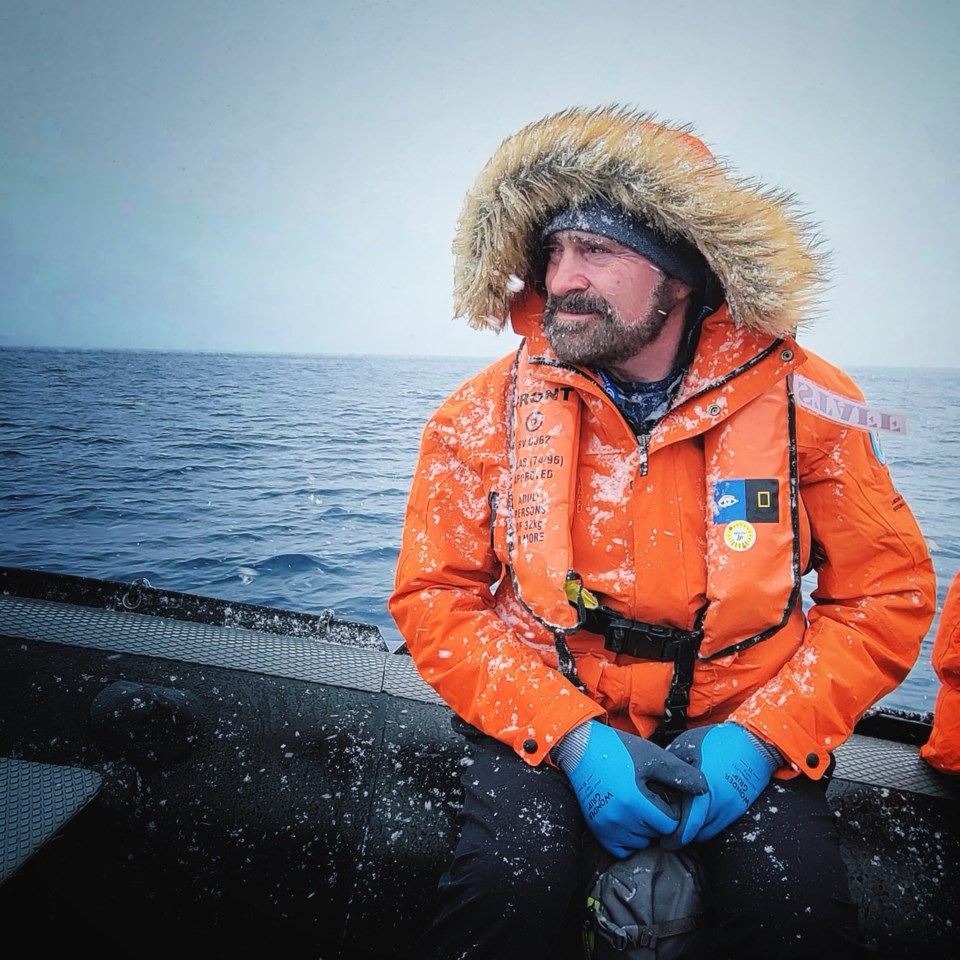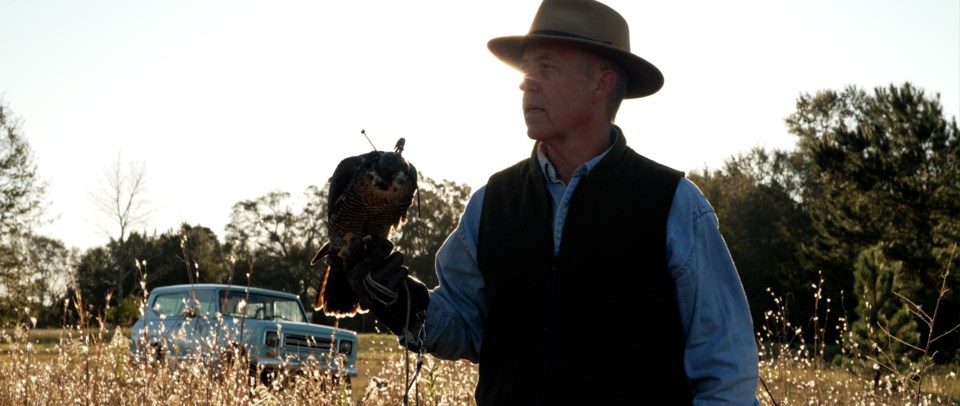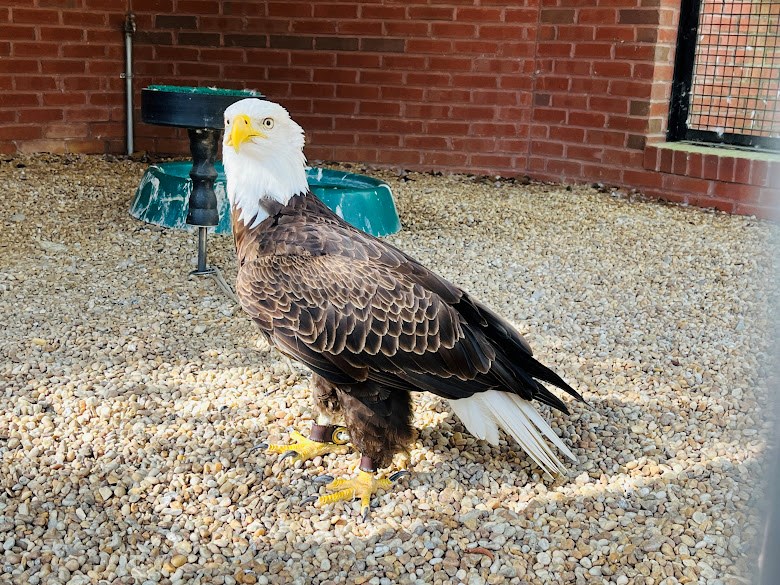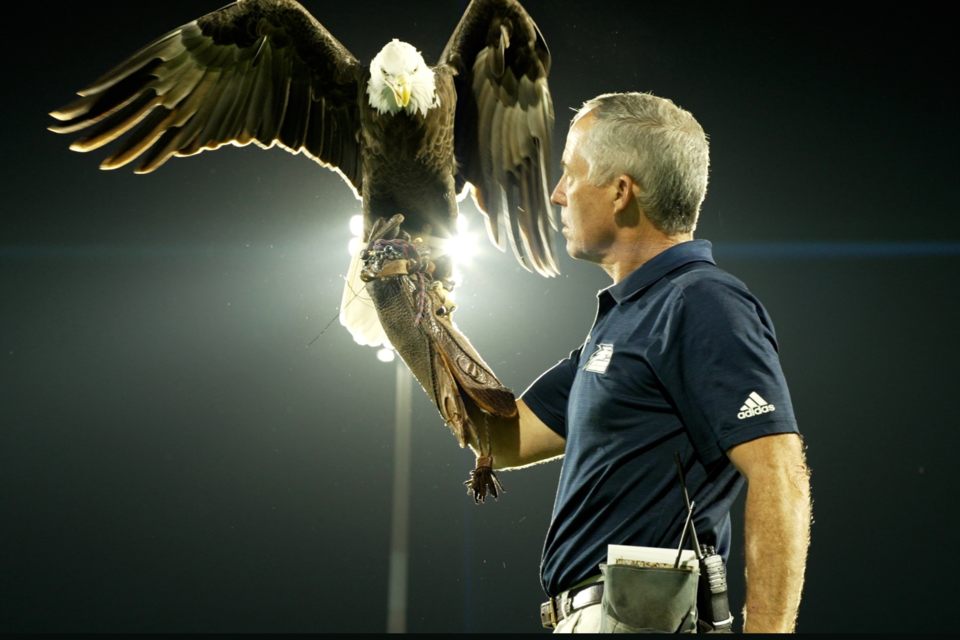For over two decades, Freedom the bald eagle wasn't just a mascot at Georgia Southern University, he was a living symbol of perseverance, spirit, and connection. Students, alumni, and fans across the country carried memories of seeing him soar across Paulson Stadium, a reminder of the strength behind the school's motto, True Blue. Freedom passed away on March 29, 2025.
Fortunately, that legacy takes flight again through Finding Freedom, a heartfelt documentary created by Emmy-winning cinematographer David Wright.
Completed just weeks before Freedom's death, the documentary has gone viral on social media. The success of this powerful video has left many of asking questions about who is David Wright and how this came documentary came about.

Wright, whose career has spanned four decades and seven continents, has built an international reputation through work on projects like Frozen Planet, Life in the Undergrowth, Welcome to Earth with Will Smith, and Natural World. His passion for storytelling about the natural world eventually led him to form his own company, Expedition Camera, a name reflecting his lifelong pursuit of capturing the wild, the human spirit, and the places where they intertwine.
Though Wright’s passport boasts stamps from around the globe, part of his heart remains in Statesboro, Georgia, thanks to a friendship with Steve Hein that began nearly 30 years ago.
A Friendship Born in the Wild
Long before Finding Freedom ever took shape, David Wright and Steve Hein’s friendship was forged in the wild — with a hawk, a snake, and a National Geographic camera rolling.
It was the early 1990s. Wright, an English-born filmmaker already making a name for himself in natural history storytelling, was shooting a documentary for National Geographic about the eastern diamondback rattlesnake, the largest venomous snake in North America. Working alongside renowned biologist Dr. Bruce Means, Wright needed to capture a pivotal moment: a natural predator of the rattlesnake interacting with it in the wild.
The obvious choice? A red-tailed hawk, one of the rattlesnake’s few natural adversaries.
The man who could deliver it? Steve Hein, a rising falconer in southeast Georgia known for his work with birds of prey.

Hein recalls the day vividly:
Armed with a high-speed film camera and a manufactured gopher tortoise burrow, Wright laid a freshly road-killed eastern diamondback rattlesnake across a clearing in the sandy soil. Hein released his trained red-tailed hawk nearby, hoping to capture a natural moment of curiosity — but what happened exceeded anything they could have scripted.
The hawk swooped in, flared her wings wide in an instinctive threat posture, and began footing — striking the snake aggressively. Eventually, she grabbed the snake’s head and dragged it off frame. From beneath the burrow set, Wright, lying belly-down in the dirt with his camera, shouted with excitement in his English accent, "Oh, this is phenomenal, Steve! She's got it!"
“It was like this crazy, serendipitous thing,” Hein said. “At the time, I thought, ‘I’ll never get bigger than this — National Geographic, a wild hawk, a rattlesnake — it doesn’t get better.’ Little did I know where the journey would lead.”
Wright fondly remembers it too, not just for the footage they captured, but for the bond that began.
“That’s how we first met,” Wright said. “And from that point on, we had a wonderful friendship and lots of adventures together.”
What began as a single afternoon in the Georgia wilderness grew into a friendship rooted in trust, mutual respect, and a shared love of the natural world. Over the years, Hein and Wright would occasionally cross paths on other projects, always with the sense that someday, there was a bigger story waiting to be told — a story about the deep, unseen bonds between man, bird, and the wild.
Decades later, when a simple camera lens test with Steve Hein and Freedom the bald eagle evolved into Finding Freedom, both men realized they had come full circle — capturing a story far deeper than they ever could have imagined back on that dusty field all those years ago.
A Camera Lens Test That Became a Legacy
That bigger story found them in an unexpected way.
Last December 2024, Wright reached out to Hein with a simple request: he had been asked to test new anamorphic camera lenses from the company Viltrox and needed a subject. Hein, with his hawks, falcons, and steady hand as a falconer, seemed perfect.
"We started doing some falconry shots," Wright said. "Testing the crafted, cinematic look with sliders and carefully choreographed moves. But very quickly, it became clear there was a deeper story here — one we needed to tell."
The "lens test" grew into a full project. Wright and Hein filmed over several months, coordinating between their schedules. The first half of the documentary captured cinematic flights and early morning scenes; the second half shifted to handheld, more documentary-style footage — fast, real, and raw.
Wright wanted to see if the lenses could handle both, the slow and the chaotic, but what he captured transcended any technical test.
What neither man knew at the time was how urgent this project would become.
Freedom’s Final Flight
Freedom, who had been a fixture at Georgia Southern since 2007, passed away just weeks after Wright completed editing Finding Freedom.
At 21 years old, Freedom had already lived far longer than most bald eagles, particularly one who had entered captivity after suffering a serious beak injury as a juvenile. The life expectancy for a bald eagle in the wild is roughly 15 years; only about 10% ever survive to adulthood. Freedom's life was a testament to Hein’s unwavering care and devotion.

"In hindsight, it was almost serendipitous," Wright said. "When we filmed the last football game, Freedom looked just as strong and fit as ever. None of us thought the end was near."
The timing made Finding Freedom even more poignant. It became not just a portrait of a living legend, but a lasting tribute, a story sealed just before the final chapter.
A Story of Trust and Connection
For Wright, Finding Freedom was never just about a bird and a man. Beneath the feathers and the spectacle, it was about trust , the invisible tether that bound Freedom and Hein together across two decades.
"I've always been fascinated by the connection between humans and animals," Wright said. "And Steve’s bond with Freedom was unlike anything I’ve ever seen."
The film captures this bond in subtle ways: the small hand signals, the silent understanding between them, the way Hein always placed Freedom’s needs first, even when crowds of thousands watched in awe.
Wright, who has filmed apex predators across the globe, from alligators to polar bears, knew he was seeing something special. "It’s easy to overlook the depth of those relationships when you’re on the outside," he said. "But when you spend time with Steve, you realize it was never about commanding Freedom, it was about partnering with him."
That partnership touched thousands. After Freedom’s passing, social media flooded with tributes. Students changed their profile pictures. Alumni shared photos of meeting Freedom at football games, graduations, and campus events. Messages poured in from across the country, and from those who had seen Freedom even just once, but never forgot it.
For Wright, the reaction was a powerful reminder of what storytelling is really about: preserving the unseen threads that tie people, places, and moments together.
Personal, Powerful, and Enduring
Despite a career spent working on some of the world’s most celebrated wildlife documentaries, Wright says Finding Freedom holds a unique place in his heart.
"I’ve done big productions all over the world," he said. "But this one, this was personal."
Beyond the technical challenges of shooting with new lenses, Wright found himself drawn to the emotional heart of the story: not just Freedom’s soaring flights, but Hein’s quiet reflections on trust, love, and letting go.
As he watched Hein grieve the loss of his longtime companion, and shoulder the overwhelming outpouring of support from the Georgia Southern community, Wright realized Finding Freedom wasn’t just about a bird, or even about Steve.
It was about all of us, about what it means to love something deeply, knowing that one day, you’ll have to say goodbye.
As the final moments of Finding Freedom unfold on screen, a quiet but powerful emotional shift takes hold. The documentary’s closing scene, Steve Hein walking away from Paulson Stadium and reuniting with his wife, is accompanied by the heartfelt track “Family” by Drew Holcomb and the Neighbors. The decision to use the song was no accident. It was the product of careful consideration and emotional intuition by Wright.
“I wanted the ending to have that lift,” Wright said. “After everything—the beauty, the trust, the loss—this was a way to bring it home, to remind viewers that at the center of it all was connection, not just between Steve and Freedom, but between families, communities, and the idea of home.”
Hein agreed. Though he didn’t know the track would be included at first, he said the addition of “Family” added an entirely new dimension to the film.
“It brings a lot of upbeat on the very end of it,” Hein said. “When I’m leaving the stadium, and then I’m with my wife — the psychology of that moment, the tone of it, it’s all about family. And that’s always been what this has really been about.”
The song’s inclusion wasn’t just an editorial choice; it became a fitting tribute. The final cut, complete with the new soundtrack, was edited shortly before Freedom passed away, lending a sense of unexpected closure to a decades-long story.
Fittingly, Hein met Drew Holcomb in person not long after the documentary was finalized, while on a snowy duck hunt in Arkansas with his son.
Looking Ahead
Today, Wright remains as busy as ever. Though he couldn't share full details, he hinted at a new project currently under wraps — blending his love of natural history and human resilience.
"I still love what I do, probably even more now than when I started," he said. "As long as I have a camera in my hand, I’ll keep telling stories."
Meanwhile, Steve Hein continues to lead the Georgia Southern Wildlife Center, mentoring the next generation and, quietly, training a new young eagle. Freedom’s spirit rides the thermals over Paulson Stadium still, not just in memory, but in every lesson learned, every heart touched.
Thanks to David Wright and Finding Freedom, that spirit will soar for generations to come.




